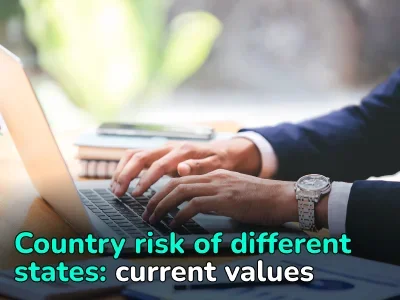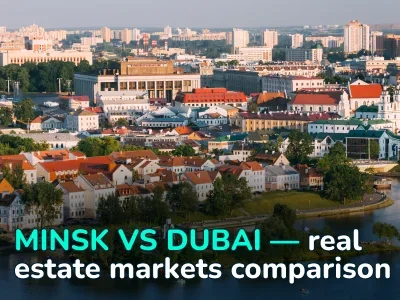
«It's a very gambling game right now.» How to become a digital landowner and make money on it
From September 2019 to March 2022 alone, real estate prices in metaverses jumped 879%. Consequently, buying virtual land can be quite profitable. Or not? How you can make money on real estate in the metaverse and what is the potential of this area — we explore with an expert in our material.
«Virtual real estate sometimes sells for more than real property»
We live in an era in which celebrities are holding concerts in the metaverse, the Vatican is opening an art gallery based on NFT, and it is possible to take out mortgages on digital houses and plots. Thus, everything we do in the real world is gradually acquiring its digital counterpart, and the real estate market is no exception. Why people buy virtual land, under what laws this market works and how much can be earned on it, Igor Zakharov, CEO DBX Digital Ecosystem, told Realting.com.
 — The virtual real estate market is still relatively new, and very few people understand what it is. According to recent reports, only about 25,000 cryptocurrency wallets have made transactions in this market, with the vast majority of them being crypto-kits and professional investors who have the ability to invest in the experimental sphere. In addition, of all the projects offering virtual objects, only four are currently showing significant activity: they are Decentraland, Sandbox, Somnium Space and Cryptovoxels.
— The virtual real estate market is still relatively new, and very few people understand what it is. According to recent reports, only about 25,000 cryptocurrency wallets have made transactions in this market, with the vast majority of them being crypto-kits and professional investors who have the ability to invest in the experimental sphere. In addition, of all the projects offering virtual objects, only four are currently showing significant activity: they are Decentraland, Sandbox, Somnium Space and Cryptovoxels.
Currently, virtual real estate is selling for more than the value of some real property — one plot of land in Decentraland sold for nearly $760,000. Among other reasons, some experts call the current state of the digital real estate market frothy or bull market (in which market fundamentals are ignored), and say that this situation occurs just before the crash.
You have to understand that the digital real estate market is still very new and not fully established. Thus, it is a very gamble. For example, if an experimental or immature meta-universe platform suddenly shuts down forever, there will be no more land, nor will all the money spent to acquire it.
«It’s not the demand so much as the hype around this market that’s great»
— We cannot pinpoint the exact moment when the demand for virtual real estate appeared. However, the idea of owning land in the virtual world has been particularly promoted in video games, many of which have been around for a long time. The only difference this time is that the available land is not only open to gamers, but also to other users. Interest in the market for meta-land is also shaped by the popularization of NFT, as well as VR and AR technologies. All of this together encourages developers to tokenize and sell digital land.
The demand for digital square footage has grown dramatically over the past few years. And the value of the virtual real estate market is projected to reach a compound annual growth rate (CAGR) of more than 31% between 2022 and 2028. At the end of last year, The Sandbox platform, for example, was generating more than 2,000 sales per week.
The growing demand is confirmed by another fact: one more popular virtual real estate platform, Decentraland, held its first land auction in December 2017, and at that time the price of a digital plot of land was only about $20. By the beginning of this year, however, the price for a so-called LAND token had risen to around $15,000. It’s worth noting, however, that this demand is very concentrated, and few people see it as a worthwhile investment. It’s not so much the demand as the hype surrounding this market that’s big.
Most of the demand for virtual real estate depends on the hype around NFT. Data from NonFungible.com showed that last December alone, NFT sales exceeded $300 million, and much of those sales were for virtual land.

«As with the NFT, some make nothing while others generate millions»
— Figuring out which laws govern the virtual real estate market is not easy. However, since these plots of land are sold as non-transferable tokens (NFTs), they follow the same rules (if any) and suffer from the same legal problems. Metaverse platforms (unlike the blockchains on which they operate) are largely centralized, and each user must agree to the user agreements, terms of service and any other binding documents provided.
Buying virtual real estate works almost the same way as buying an NFT. The document for this piece of land is a blockchain token. To purchase metaverse virtual real estate, you need two things: a digital cryptocurrency wallet (the most popular are Metamask and Binance) that supports the cryptocurrency used on the platform, and an account on that platform. It remains to link the wallet to the platform, and you can start buying virtual land and other available assets. Interestingly, the virtual world also has brokers and property managers from whom you can buy the same assets, but at a speculative price.
The value of a virtual home or plot depends on the same factors as with real property, including location, size, and demand. Today, a parcel of land on some major platforms costs, on average, more than $12,000. For less, land can be purchased on smaller, newer platforms.
Once you invest in virtual land, you can do whatever you want with it: build stores and galleries, throw parties, etc. Brands are able to use their property, among other things, to create advertising and organize product launch events.
As for making money in the virtual world, the main way is to sell or rent land. As with the NFT, some earn nothing, while others generate millions. Token.com once reported that 116 parcels of land were sold for about $2.5 million, which is about $21,000 each. The first NFT digital home ever sold was worth about $500,000. So, what the return on virtual real estate will depend largely on the value of your digital assets at the time of sale.
To summarize: there isn’t much demand for virtual real estate right now, but the market has the potential to enter the gaming industry. Millions of gamers around the world are already used to spending a lot of time in virtual environments. I believe that if virtual real estate platforms develop features that are particularly appealing to the world of gamers, they can succeed and spread massively.
Author
I am responsible for editorial work. I write expert interviews and guides.




















